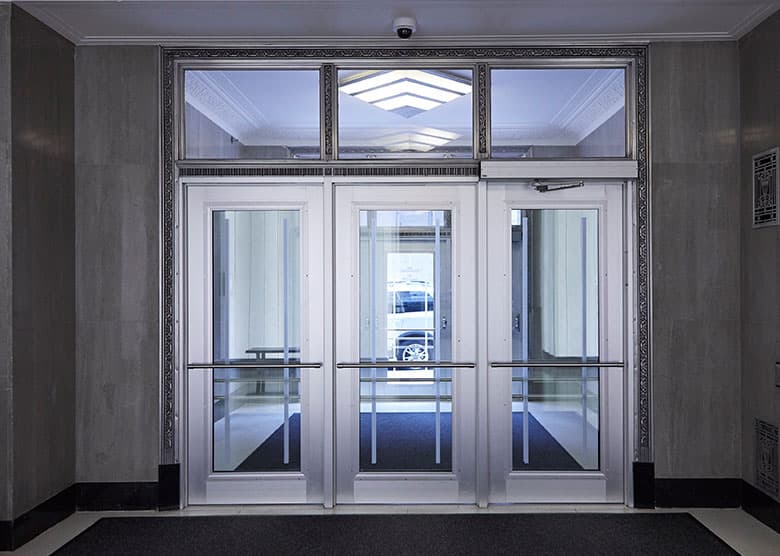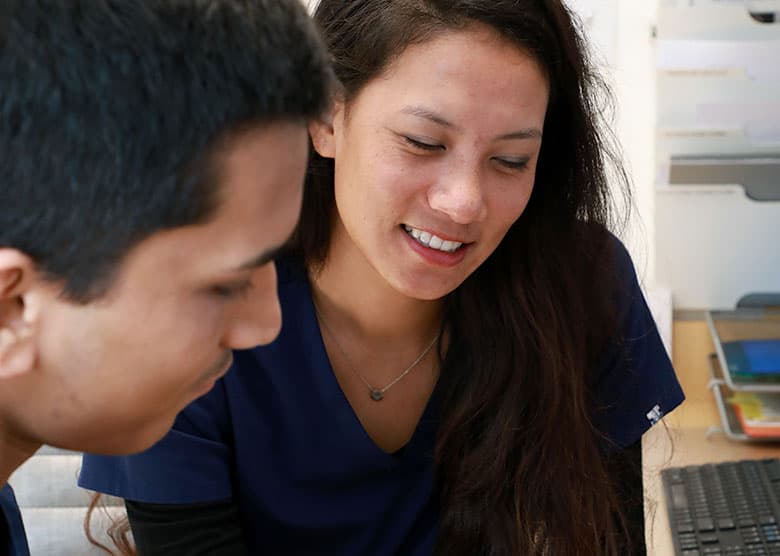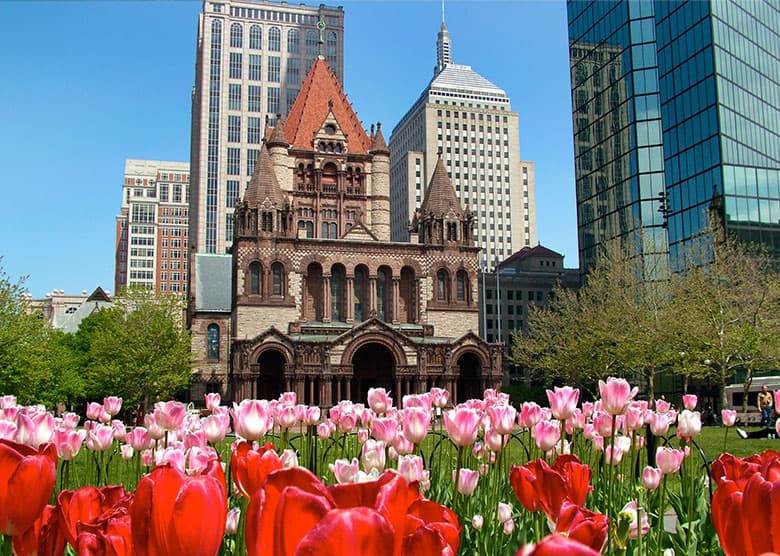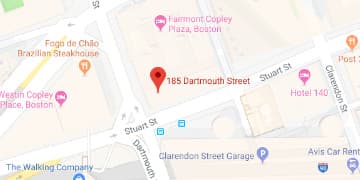Sclerotherapy
Jump To
Sclerotherapy for Spider Vein Treatment
Spider veins, small dilated blood vessels that appear close to the surface of the skin, can be unsightly and cause self-consciousness. Fortunately, Sclerotherapy is a minimally invasive medical procedure used to treat spider veins. During the procedure, a liquid medication named Asclera is injected into the spider veins with a very small needle, which irritates the lining of the vessels and causes them to collapse and eventually fade from view. The number of sessions required varies depending on the severity and number of the spider veins and the desired results.
Sclerotherapy Treatment Works Fast
After the procedure, it is recommended that patients wear compression stockings to help with healing and reduce the risk of blood clots. It is also common to experience mild side effects, such as stinging, redness, bruising, and itching of the treated areas. Sclerotherapy is generally considered safe and effective for spider vein treatment, but it may not be suitable for every patient. We at the Dermatology Institute of Boston can help you determine if this procedure is right for you and answer any questions you may have.
Spider Vein Causes: What You Need to Know
Spider veins can have several causes, including age, genetics, pregnancy, hormonal changes, obesity, and prolonged sitting or standing. If you are experiencing spider veins, you should schedule a consultation with a board-certified dermatologist to determine the underlying cause and best course of treatment.
Spider Vein Symptoms: When to Seek Treatment
Spider veins are not always a medical concern, but they can be a sign of an underlying venous disease. It is important to seek medical attention if you experience any of the following symptoms:
- Pain, burning, or aching in the affected area
- Swelling, redness, or warmth around the affected area
- Skin ulcers or sores near the affected area
- Bleeding or sudden changes in the appearance of the affected areas
If you experience any of these symptoms, schedule a consultation with a board-certified dermatologist to determine the best course of treatment.
Why Choose The Dermatology Institute of Boston for Sclerotherapy?
At The Dermatology Institute of Boston, located near Boston Common and the Charles River, our board-certified dermatologists are your ideal choice for sclerotherapy treatments. Dr. Ali Al-Haseni is skilled in many dermatology specialties, including surgical dermatology, cosmetic dermatology, and cutaneous oncology.
A member of the American Academy of Dermatology, Dr. Al-Haseni speaks both English and Arabic, helping him provide care for patients of many cultural backgrounds. He has experience with numerous dermatological issues, including skin cancer, psoriasis, acne, and eczema.
Dr. Al-Haseni pursued his degree at Al-Mustansiriyah School of Medicine in Adhamiyah, Iraq, graduating first in his class. He then went to Boston University School of Medicine on a scholarship, serving as chief of the international dermatology trainees.
After graduating with a Masters in Clinical Dermatology, he completed a dermatology residency at Boston Medical Center, paired with a first-year internship in general surgery. There, he was honored with the Marie-France Demierre Award for Humanism in Medicine by the Department of Dermatology, along with the Junior Resident Award.
Dr. Emmy Graber, founder of The Boston Institute of Dermatology, is a 2024 Boston “Top Doc” and was honored with the Top Doctors 2024 award from Castle Connolly. Dr. Graber specializes in cosmetic dermatology and acne, and she has focused training in Laser and Cosmetic Surgery thanks to her fellowship at SkinCare Physicians of Chestnut Hill.
We have been recognized as a top dermatology practice for patients in and near Boston. Our clinic is near Downtown Boston and just a 10-minute drive from the Museum of Fine Arts, Boston, making us the perfect choice for out-of-town patients. If you’re in need of simple and convenient sclerotherapy vein removal, there’s no better choice than our Back Bay practice.
Spider Vein Treatment Cost: Is It Worth It?
The cost of spider vein treatment can vary depending on the severity and number of spider veins and the desired results. At the Dermatology Institute of Boston, we price by time, which include the Jobst brand compression stockings with treatment.
Sclerotherapy is not covered by insurance. It is important to consider the long-term benefits of the treatment. Sclerotherapy can significantly improve the appearance of spider veins, which can boost self-confidence and improve the overall quality of life.
Learn More About Sclerotherapy
If left untreated, spider veins can worsen over time. If you are experiencing spider veins, schedule a consultation with a board-certified dermatologist at our Boston location to determine the best course of treatment. Call (857) 317-2057 today for your consultation.
Sclerotherapy FAQ
How long does sclerotherapy last?
When patients come to The Dermatology Institute of Boston, conveniently located near the Sheraton Boston Hotel and just blocks from Interstate 90, their sclerotherapy injection session can take anywhere from 10 to 45 minutes. The exact amount of time the procedure lasts can be impacted by the size and number of veins being addressed.
A sclerotherapy treatment session can reduce targeted veins by around 50 to 80 percent. Patients may need to come in after six weeks for another treatment to further decrease the veins’ appearance.
Sclerotherapy treatments are successful for 75 to 90 percent of patients. Generally, when a vein is responsive to sclerotherapy injections, it won’t return.
When a treated vein is not responsive, more sclerotherapy treatments may be recommended, or a different sclerosing solution may be injected. In some cases, other vein treatment methods may be recommended.
Because sclerotherapy doesn’t prevent the formation of new veins, new veins may form in the region over time naturally. Sclerotherapy can be used to treat these veins, if appropriate. To reduce the chances of new vein formation, address any existing risk factors for venous insufficiency.
Is sclerotherapy painful?
During a sclerotherapy treatment at The Dermatology Institute of Boston, located just blocks from the Boston Marriott and the Boston Public Library, most patients don’t feel a great deal of pain. In some cases, patients briefly experience discomfort, a slight stinging or burning sensation, a tiny pinch, or a cramping feeling. Others feel no pain during the treatment.
In cases where the sclerotherapy injection solution leaks from the vein into the surrounding tissues, this can cause increased pain. If you’re experiencing pain during treatment, tell your dermatologist immediately.
Since sclerotherapy isn’t a surgical procedure, no general anesthesia is necessary. Some doctors don’t use anesthesia during sclerotherapy, while others inject a local anesthetic called lidocaine in order to minimize pain and discomfort.
What is the difference between spider veins and varicose veins?
Spider veins and varicose veins are different types of damaged blood vessels. Spider veins (also called telangiectasias) are smaller, usually under one millimeter in width, and appear faint.
Spider veins can be red, blue, purple, or green. These superficial veins usually appear in areas like the face and legs. They’re flat, and they often form in webs or branches.
When capillaries, arterioles, venules, and other smaller blood-vessel structures are damaged, spider veins appear. These small veins form more frequently than varicose veins.
Spider veins don’t typically cause pain, discomfort, or any other symptoms. Rarely, they can cause burning, itching, or cramping feelings, and in these cases, this should be discussed with a healthcare provider.
Sclerotherapy is a very popular spider vein treatment. Spider veins may also be addressed with laser treatments.
Varicose veins look larger than spider veins. These raised veins are usually purple, blue, or blue-green in color and may be swollen, twisted, or bulging. They’re typically over three millimeters wide and form deeper in the skin.
These veins usually appear in areas like the legs, feet, calves, inner thighs, ankles, buttocks, and lower pelvic region. When they form in the scrotum, they are called varicoceles.
Varicose veins appear when deeper veins are damaged. They form when the valves in the veins malfunction, causing the blood to flow back downward towards the feet (succumbing to gravity). These veins are quite common; at least a third of people experience them at some point during their lives.
When varicose veins form and grow larger, they can cause pressure on the surrounding smaller veins, causing them to turn into spider veins.
Varicose veins cause issues like swelling, itching, discomfort, cramping, aching, and pain. In most cases, they don’t result in further issues. In rare cases, they can result in discoloration, venous leg ulcers, blood clots, and bleeding (from bursting). They may also indicate a health issue called chronic venous insufficiency.
To address varicose veins, patients are encouraged to elevate their legs more often during the day, make changes to their diet, and wear compression stockings. After trying these, they may be recommended to come in for varicose vein injections or other varicose vein treatments like endovenous thermal ablation or vein surgery.









